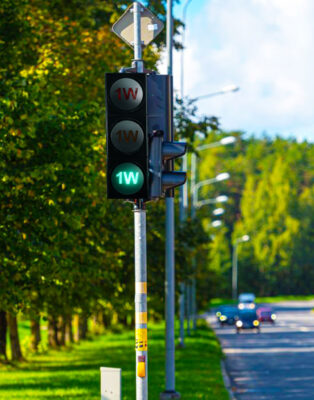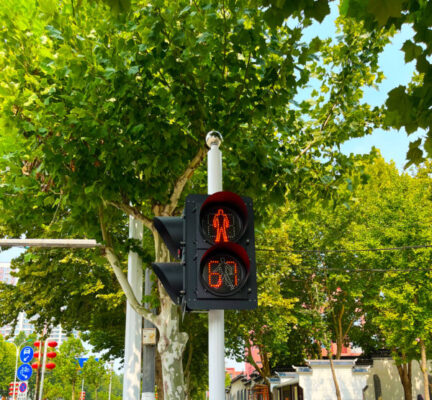Table of Contents
ToggleStop lights are an essential part of modern traffic management, using red, yellow, and green colors to guide vehicles and pedestrians safely. Have you ever wondered why stop lights use exactly these three colors? This article explains the historical background, symbolic meanings, and scientific reasons behind the color design of stop lights, helping you better understand this globally standardized traffic signaling system.
The Historical Background of Stop Lights: Why Red, Yellow, and Green?
The first traffic signal was installed in London in 1868, laying the foundation for modern stop lights. As car ownership surged in the early 20th century, especially in the 1920s in the United States, traffic management became increasingly challenging. In 1920, Detroit introduced the electric three-color stop light, officially adopting red, yellow, and green as signal colors. Today, there are over 300 million stop lights worldwide, making this three-color design the cornerstone of urban traffic control. The selection of these colors considered both technological feasibility at the time and human visual perception characteristics, providing a reliable safety foundation.
The Symbolic Meaning and Function of Red, Yellow, and Green in Stop Lights

- Red (The “Stop” Signal in Stop Lights)
Red light has a wavelength of approximately 620–750 nanometers, representing the longest visible wavelengths with strong penetrating power. Studies show that the human eye is highly sensitive to red, allowing the red stop light to be clearly seen from up to 500 meters, even in foggy conditions. Culturally, red universally signals danger and caution, making it the perfect choice to alert drivers to stop. - Yellow (The “Caution” Signal in Stop Lights)
Yellow light has a wavelength between 570 and 590 nanometers, positioned between red and green within the visible spectrum. Yellow serves as a transition signal, usually lasting about 3 seconds, warning drivers that the red light is imminent or the green light is ending. This buffer reduces sudden braking and improves traffic safety. Yellow lights help maintain smooth traffic flow and allow drivers to make safer decisions. - Green (The “Go” Signal in Stop Lights)
Green light wavelengths range between 495–570 nanometers, signaling safety and permission to proceed. The green light duration varies depending on traffic conditions, typically lasting between 15 and 90 seconds, ensuring efficient traffic flow. Green psychologically conveys safety and permission, encouraging drivers to move forward confidently.
The Scientific Basis and Visual Effectiveness of Stop Light Colors

The use of red, yellow, and green in stop lights is backed by science, not just tradition:
- Visual Sensitivity
The human retina’s cone cells are most sensitive to red and green light, with peak sensitivities around 620 nm for red and 530 nm for green. Yellow, positioned in between, serves as a perfect cautionary color. Research shows this tri-color system minimizes driver errors and recognition delays. - Light Penetration Ability
Due to its longer wavelength, red light penetrates fog, rain, and snow better than other colors, ensuring visibility in poor weather. Although green light has slightly less penetration ability, it is sufficient for signaling “go” in normal conditions. - Color Contrast and Recognition
Red, yellow, and green are spaced approximately 60 degrees apart on the color wheel, creating strong contrast that helps minimize misinterpretation. Studies estimate that the use of three-color stop lights reduces traffic accidents caused by signal misreading by approximately 30%, greatly enhancing intersection safety.
Conclusion
The use of red, yellow, and green in stop lights is a seamless integration of history, cultural significance, and scientific principles. Based on optical properties—red (620–750 nm), yellow (570–590 nm), and green (495–570 nm)—and human visual sensitivity, this color scheme ensures efficient recognition in various environments. Understanding the meanings and scientific reasons behind stop light colors helps improve traffic safety awareness and protect the lives of drivers and pedestrians alike.
0
